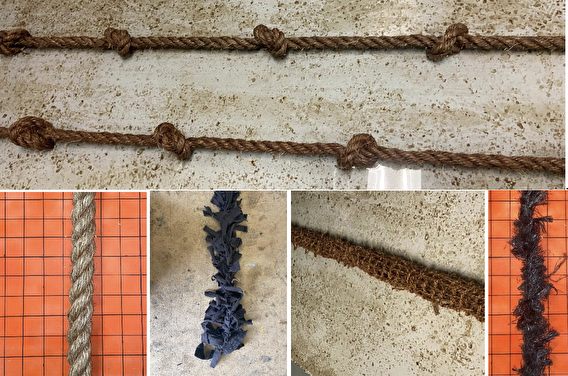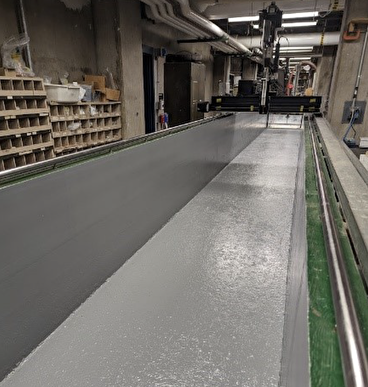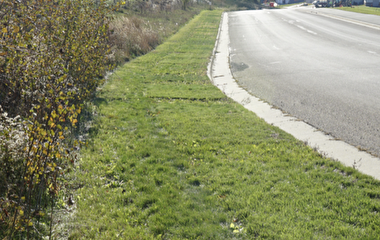
In 2018, U of M researchers discovered that repurposing a fuzzy plastic rope designed for mussel aquaculture showed promise as a low-cost fish ladder to help fish pass through culverts in Minnesota. However, long-term testing revealed that the rope shed microplastics, which means an alternative is needed.
“The goal of our recent project was to develop a prototype culvert retrofit for fish passage that is inexpensive, easy to install, scalable for different sizes and types of culverts, and made from a sustainable, non-plastic material,” says Jessica Kozarek, principal investigator for the project and a research associate with the U’s St. Anthony Falls Laboratory.
Mussel spat rope, which is made from polyethylene plastic, helps fish travel through fast-flowing culverts: Its “fuzzy” structure disrupts the flow of water around it and creates slower water-flow zones that fish can use to rest or hide in. It can be installed without completely replacing the culvert, and it is cheaper and less disruptive than other retrofits such as baffle and weir. It seemed like an ideal method until researchers learned of the shed microplastics over longer time periods.
Kozarek’s team tested five different rope materials—sisal, coir, cotton, hemp, and manila—in a variety of configurations: single ropes, multiple ropes, knotted, net structure, and pom-pom structure. They also tried coating each material in pine tar—a traditional, all-natural rope preservation tactic.

In addition to the ropes, student researchers with the project decided to replicate and test the fuzzy nature of the mussel spat rope with recycled materials by knotting together half-shredded t-shirts. Each material was placed inside the St. Anthony Falls Laboratory’s Outdoor StreamLab for four months to see how it behaved over time.
In the end, the pom-pom structure of the coir-fiber rope proved to be the most effective. Coir rope held up the best (both with and without the pine tar treatment), and the pom-pom structure created the best slow-velocity refuge for fish without catching too much debris (a problem that the net structure had). The only downside to the pom-pom structure was that it is the most difficult configuration to manufacture.
The recycled t-shirts also proved very effective at slowing water flow near the ropes, but every material that the researchers tested was almost completely degraded by the end of the four-month testing period. This could, however, be a useful strategy for short-term, seasonal culvert treatments.
Next steps for the project will involve finding manufacturing options for the materials that proved effective, as well as continuing to search for additional bio-based materials that might have promise.
The original 2018 project was funded by the Minnesota Department of Transportation, and the 2024 project was funded by the Center for Transportation Studies. CTS seed funding, awarded biannually, aims to help CTS Scholars develop expertise in emerging areas and foster strategic relationships that position them for future funding opportunities.
—Sophie Koch, contributing writer


